Foreign self-propelled mortars caliber 120 millimeters
General trends
In the field of self-propelled mortars in recent years there have been several trends aimed at improving the combat qualities. First of all, it is necessary to note the gradual transition from 81 or 82 millimeter caliber systems to more serious weapons. Over the past decades, almost all leading countries have begun to actively develop the direction of 120-mm self-propelled mortars. In fact, such a weapon is a compromise between weight and dimensional indicators and firepower. At acceptable sizes, it is precisely the 120 mm mortars that can be used to send relatively large ammunition to the target for a sufficiently large distance.
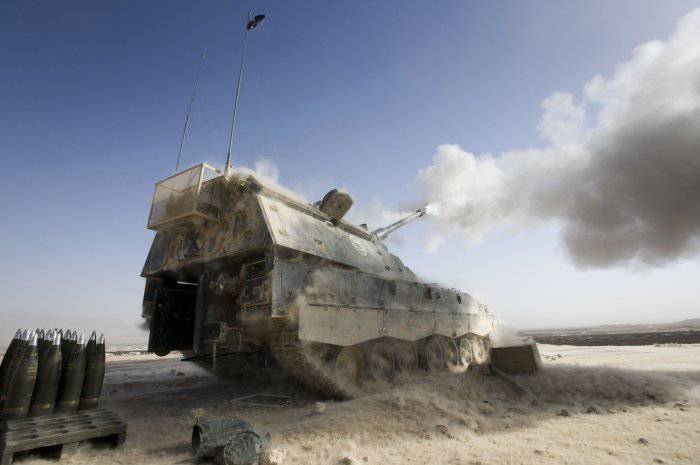
Another interesting trend observed in this area concerns the architecture of combat vehicles. New self-propelled mortars regularly appear, the weapons of which are not located inside the armored hull, but in a rotating turret. Such a “hybrid” of classic ACS and mortar has the advantages of both classes of equipment and is therefore capable of solving a wide range of tasks. Recent self-propelled mortars are almost always equipped with an advanced automated fire control system and a number of other electronic equipment. In addition, mortars are mastered by those methods of firing, which previously were characteristic only of howitzers - for example, MRSI or a "barrage of fire", when the gun makes several shots with a maximum rate and different elevation of the barrel, due to which several mines approach the target almost at the same time.
In the field of ammunition for self-propelled mortars observed exactly the same trends as in other areas of weapons. Along with high-explosive mines, new types of corrected are being created. In addition, attempts are being made to create cluster munitions. Gunsmiths seek to increase the accuracy and power of new mines, as well as trying to increase their range. The latter is achieved mainly through the creation of active-reactive mines with their own jet engine. Currently in the United States is the PERM program (Precision Extended Range Munition - "High-precision extended range ammunition"), whose goal is to create a correctible mine with a range of up to 16-17 kilometers, which is approximately twice the size of conventional ammunition.
Consider some foreign self-propelled mortars created in recent years.
Germany
At the end of the nineties, the German company Rheinmetall proactively upgraded the Wiesel 1 tracked chassis. The resulting Wiesel 2 machine with improved performance attracted the attention of the military and as a result became the basis for several developments, including a self-propelled mortar. In 2004, the testing of two 120-mm mortars based on Wiesel-2 began. The structure of the Advanced Mortar System included three vehicles: the mortar itself, the command post with communication and control systems, and the reconnaissance vehicle.
Due to the small size of the base machine Wiesel-2 120-mm mortar in a combat position is located outside its armored hull. When transferred to the camp, it is placed on special restraints by turning forward and fixed. The mortar is mounted on recoil devices, which, in turn, are mounted on a rotating carriage. Horizontal guidance is carried out within 30 ° from the machine axis to the right and left, vertical - in the sector from + 35 ° to + 85 °. The combat vehicle is equipped with an automated digital fire control system. For guidance, manual mechanisms or actuators are used, controlled by the MSA. The maximum range of fire when using new ammunition created by Rheinmetall is more than 8 kilometers. In the laying of ammunition armored vehicles fit to 30 min. The crew of a combat vehicle consists of only three people, one of whom is a mechanic driver. After upgrading the armor, the Wiesel-2 has a combat mass of about 4,2 tons, which makes it suitable for transportation by air and landing.
In 2009, the German Ministry of Defense and Rheinmetall signed a contract, according to which in the coming years the army will receive 38 self-propelled mortars Wiesel-2, as well as reconnaissance and command vehicles for 17. The first games have already been delivered. There is information about the continuation of the supply of such self-propelled mortars after the execution of the existing contract.
Israel
At the beginning of the 2000th, Soltam Systems created the CARDOM (Computerized Autonomous Recoil rapid Deployed Outrange Mortar - “Standalone computerized rapid-fire mortar with increased range of fire and recoil devices”) designed for installation on various chassis. The CARDOM system is a set of technical tools that allow you to mount the desired mortar of the appropriate caliber on the existing chassis. A rotary platform with a guidance system horizontally and vertically is installed on the base car or armored personnel carrier. To expand the list of usable chassis, Soltam Systems engineers provided for recoil devices unusual for mortars.
In addition to the gun platform, CARDOM includes navigation systems, a ballistic computer and other equipment. The main type of weapon suitable for use in the CARDOM system is an 120-mm Soltam K6 mortar with a semi-automatic loading system. When used, guidance devices allow firing in any direction at a distance of up to 7,2 km (when using ordinary mines). Experienced calculation can provide rate of fire up to 15-16 shots per minute.
CARDOM systems are already in service with the Israeli army. The Israel version is mounted on the modified chassis of the M113 armored personnel carrier and is named Keshet (“Bow”). In the middle of the past, 2012, Soltam Systems, in accordance with the contract, delivered to Spain the first batch of CARDOM systems with 81-mm mortars mounted on the chassis of four-wheeled vehicles. It is expected to sign a contract for the supply of CARDON systems in the United States, where they will be mounted on the Stryker chassis.
China
Approximately in the middle of the two thousandth, the People’s Liberation Army of China received a new self-propelled mortar PLL-05, created by NORINCO and combining all the advantages of a mortar and a cannon. On the six-wheeled chassis, the WZ551 mounted a new combat module with a universal weapon, suitable for firing in a wide range of pointing angles. It is worth noting, the first mention of the PLL-05 appeared at the beginning of the last decade, but then this combat vehicle was offered only for export. Obviously, several years later, due to the lack of demand, the self-propelled mortar was processed in accordance with the requirements of the Chinese army and began its mass production.
In terms of its concept, the PLL-05 strongly resembles the Soviet / Russian 2C9 “Nona-S” project: a tower with a universal instrument combining the best qualities of a mortar and a cannon is installed on the base chassis. The PLL-05 combat module rotates horizontally by 360 °, and the mortar installation system allows you to fire with an elevation from -4 ° to + 80 °. 120-mm mortar capable of using a wide range of ammunition. When using standard high-explosive mines, the maximum firing range does not exceed 8,5 kilometers. When firing active-reactive mines, this figure increases to 13-13,5 km. There is also information about the existence of a cluster mine carrying 30 armor-piercing sub-elements. The declared penetrability is up to 90 mm. Also for the mortar PLL-05 created cumulative ammunition that allows you to hit armored targets at ranges up to 1100-1200 meters. The maximum rate of fire, regardless of the type of ammunition - 7-8 shots per minute.
The PLL-05 combat module with the 120 mm universal mortar can also be mounted on other chassis. In particular, an option based on an eight-wheeled armored personnel carrier Type 07P was demonstrated at exhibitions of armaments and military equipment. Nevertheless, equipment for the army is based on a six-wheeled armored vehicles. Probably, the weights of both variants had an effect on this: about five tons of PLL-05 available in the PLA are about five tons lighter than a self-propelled mortar based on Type 07P. Thus, combat vehicles weighing about 16,5 tons can be transported by Shaanxi Y-8 transport aircraft.
United Arab Emirates
The original approach to the design of self-propelled mortars used the company IGG (International Golden Group) in the creation of the combat vehicle Agrab ("Scorpion"). This self-propelled mortar, in contrast to similar machines of foreign production, was made on the basis of an army SUV. IGG engineers chose the South African-made RG31 Mk 6 MPV armored vehicle as a chassis for a promising combat vehicle. This choice was justified by the peculiarities of the landscape of the Emirates and surrounding regions. The authors of the Agrab project considered that the patency of the four-wheeled armored car would be sufficient to perform the assigned tasks, and the protection complex, made in accordance with the MRAP concept, would ensure the safety of the crew and weapons.
In the back of the armored car placed combat module with high armored sides. Before firing, the tailgate leans back and, with the help of a special truss, brings XAMUM-mm mortar made in Singapore from SRAMS (Super Rapid Advanced Mortar System - “Superfast Perspective Mortar System”) into a combat position. Exact weapon pointing angles are unknown, but based on the available data, it can be concluded that the horizontal sector is about 120-50 wide and elevated to 60-75. Inside the combat module are placed laying on 80 min. The Arachnida fire control system is responsible for firing in the SRAMS combat module. Electronics allows you to calculate the data for firing and transfer them to the mechanisms of guidance. If necessary, the calculation of the mortar can use manual mechanisms. When using standard high-explosive mines, the Agrab combat vehicle is capable of firing targets at distances up to 58-8 kilometers. The maximum range of shooting mines does not exceed 8,5-7 km. Nothing has been said about the existence of other ammunition, but the caliber and characteristics of the mortar probably allow us to expand the range of mines used.
Agrab self-propelled mortar was created by IGG in a proactive manner. In 2007, the first prototype tests began. Further tests and refinement of a promising combat vehicle continued until the 2010 year, after which the armed forces of the United Arab Emirates showed a desire to purchase a batch of new technology. In 2011, the UAE’s Ministry of Defense ordered self-propelled mortars from IGG 72 with a total value of about 215 million US dollars.
Poland
In 2008, Poland presented its project of self-propelled mortar. Then the company Huta Stalowa Wola (HSW) began construction of the first prototype of the new combat module RAK. Like some foreign developments, the new Polish tower with weapons had to combine the capabilities of a mortar and a cannon.
The first prototype of the RAK combat vehicle was assembled on the basis of the Soviet 2C1 “Gvozdika” self-propelled gun, which saved time to refine the chassis for the new combat module. Inside the armored volume of the RAK turret there is a 120-mm breech-loading mortar and all the necessary units. The declared rate of fire of the system is up to 10-12 rounds per minute, which is achieved with the help of an automated loading system. Vertical mortar pointing angles - from -3 ° to + 85 °; horizontal - without restrictions. The fire control system used by the company WB Electronics. The maximum target range of a standard mine, like other self-propelled mortars of caliber 120 mm, does not exceed 8-8,5 kilometers. When using mines with an additional jet engine, this figure increases to 12 kilometers.
The first prototypes of the PAK self-propelled mortar were made on the basis of the Gvozdika self-propelled artillery mount, but later HSW chose a different base chassis. They became an armored vehicle Rosomak, which is a licensed version of the Finnish armored personnel carrier Patria AMV. According to reports, currently there is a small-scale production of self-propelled mortars RAK, but information about the number of assembled machines is missing.
Singapore
The SRAMS mortar mentioned above, used in the Agrab complex, was created by the Singapore company STK (Singapore Technologies Kinetics) in the late nineties and was soon put into service. The SRAMS combat module was designed to meet the requirements of the Singapore military, which greatly influenced its appearance.
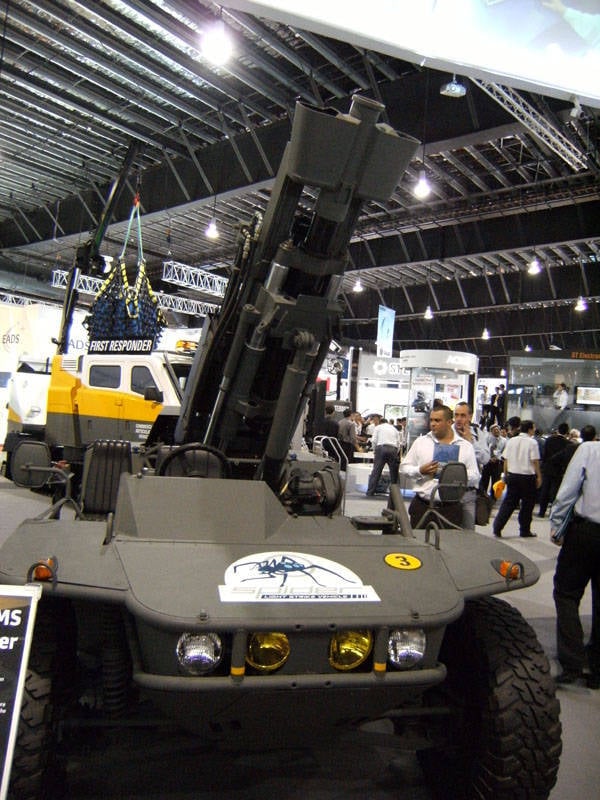
So, the combat vehicle, which entered service with the Singapore Army, was made on the basis of the STK Bronco articulated tracked carrier. All units of the mortar are located on the rear link of the machine, which made it possible to competently spread the weapons and equipment. The mortar is equipped with an original charging system: the units located near the barrel raise the mine to the level of the muzzle and lower it into the barrel. Submission of mines to the loading mechanism is carried out manually. This original and at the same time complicatedly solved the problem of high-speed loading of a muzzle-loading mortar: it can do up to ten rounds per minute. The SRAMS mortar itself is mounted on recoil devices, and is also equipped with an original muzzle brake. As a result of these measures, the recoil is significantly reduced, which makes it possible to install the combat module on relatively light chassis like automobiles, as was done in the Agrab complex. Horizontal guidance of the SRAMS mortar is possible only within a sector of width 90 °. Vertical - from + 40 to + 80 degrees. Shooting at the same time is "through the roof" of the front module of the conveyor. The AFCS automated fire control system is located in the tracked vehicle cab and allows you to hit targets with a standard mine at distances up to 6,5-6,7 kilometers.
The SRAMS self-propelled mortar based on the STK Bronco tracked chassis was put into service in the first half of the two thousand years and still remains the main weapon of this kind in the Singapore army. For possible export deliveries, STK made some modifications to the design of the combat module. In particular, there is a prototype based on the American car HMMWV, equipped with a SRAMS mortar and lowered base plate.
Finland and Sweden
In the late nineties, the Finnish company Patria, in collaboration with the Swedish company BAE Systems Hagglunds, created an original combat module for self-propelled mortars called AMOS (Advanced Mortar System - "Advanced Mortar System"). He had a characteristic difference from the foreign developments of a similar purpose, namely, two guns. After several years of design, testing and refinement, the new system entered service with the armies of Finland and Sweden.
The towers of the serial Finnish and Swedish self-propelled mortar AMOS mounted on tracked chassis CV90. Two 120-mm guns, automatic loading and auxiliary equipment are located in the tower itself. In the advertisement of the AMOS complex it was especially noted that he is able to make ten shots within four seconds. However, the practical rate of fire of two mortars is limited to 26 rounds per minute. The rotating tower does not leave dead zones, and the slope of the block of trunks from -5 to + 85 degrees allows you to shoot standard mines at a distance of up to ten kilometers. It is worth noting that at a certain stage of testing, it was possible to throw ammunition at 13 kilometers, but more powerful returns had a bad effect on the units of the entire combat vehicle. In this regard, the maximum firing range is also limited. The fire control system allows you to calculate the angles of the guns, taking into account external conditions. If necessary, it provides shooting in motion with a speed of no more than 25-30 km / h, but in this case, the effective range of fire is reduced by half. If you want to hit the target in motion at a distance close to the maximum possible, there is another algorithm for the work of calculators. In its application, all calculations are made on the go, followed by a short stop and a volley. Then the self-propelled mortar can leave the position and continue calculations for an attack from another location.
The Finnish and Swedish armed forces have ordered several dozen AMOS self-propelled mortars and are actively using them in training exercises. For exports, it was necessary to create a special modification of the combat module with one mortar. This tower was called NEMO (NEw MOrtar - "New Mortar"). From the basic design of NEMO differs in only a few details directly related to the number of weapons. It is worth noting that the single-barreled version of the Finnish-Swedish mortar, in contrast to the original system, interested foreign buyers. Orders are already being fulfilled for Saudi Arabia, the United Arab Emirates and Slovenia. Also, the desire to purchase NEMO combat modules was shown by Poland, but the contract has not yet been signed.
Switzerland
In the late nineties, the Swiss company RUAG Land Systems introduced its new development called Bighorn. This combat module is a turntable with a mortar and a set of electronic equipment designed for installation on armored vehicles of various types. The Bighorn mortar was primarily offered for installation on MOWAG Piranha armored personnel carriers, which caused its size, mass and recoil force.
120-mm mortar mounted on a turntable with a lifting mechanism and recoil devices. The latter, according to official data, can reduce the return on 50-70% compared with mortars that do not use such mechanisms. Bighorn module is designed for installation in the troop compartment of any suitable armored vehicles. Shooting in this case is carried out through the open hatch in the roof. Because of this, horizontal mortar guidance is possible only within a sector of width 90 °. Elevation angles range from + 40 to + 85 degrees. Loading is performed by a semi-automatic system: the calculation gives mines to a special tray and further loading of ammunition into the barrel is made by a mechanical device. The stated maximum rate of fire - up to four shots in 20 seconds. The maximum range when using the most powerful powder charge does not exceed 10 kilometers. The location of the fire control devices is interesting. All electronics are arranged in a small console, located next to the mortar. The guidance is controlled either by a joystick or manually, using appropriate mechanisms.
The Bighorn combat module could be the basis for several types of self-propelled mortars based on different chassis. Options based on MOWAG Piranha (Switzerland), FNSS Pars (Turkey), etc. were tested. In all cases, the advantages and disadvantages of the mortar and related systems were identified, but it didn’t go further. For the fifteen years that have passed since the development of the Bighorn system, no country has become interested in it and has not even initiated contract negotiations. The development company continues to improve the mortar complex, but its prospects remain dim.
***
It is easy to see that in recent years, the development of self-propelled mortars is in accordance with two main ideas. The first of these involves the installation of platforms with weapons and electronics inside the hull of existing machines (primarily armored personnel carriers). The result is a simple and easy to use mortar complex, suitable for all tasks assigned to it. The second concept is much more complicated, although it implies a tangible increase in combat qualities. The possibilities of such a self-propelled mortar grow through the use of a full-fledged gun turret with large angles of vertical guidance. Despite the obvious advantages, self-propelled mortars of the second type are unlikely to completely displace combat vehicles made in accordance with the first idea. Having great fire capabilities, "tower" mortars seriously lose in the cost and complexity of the design. Therefore, over the next years, even in the most powerful and developed armies, self-propelled mortars of both types will be encountered.
On the materials of the sites:
http://army-guide.com/
http://globalsecurity.org/
http://army-technology.com/
http://armyrecognition.com/
http://strategypage.com/
http://military-today.com/
http://ruag.com/
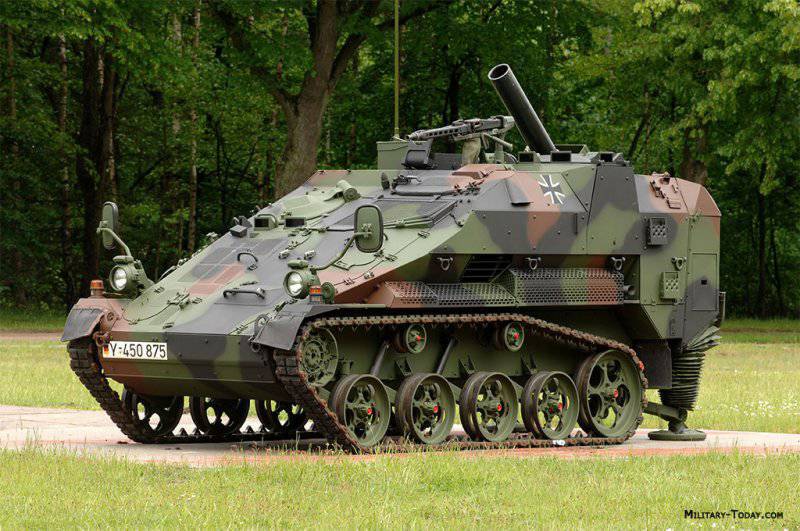

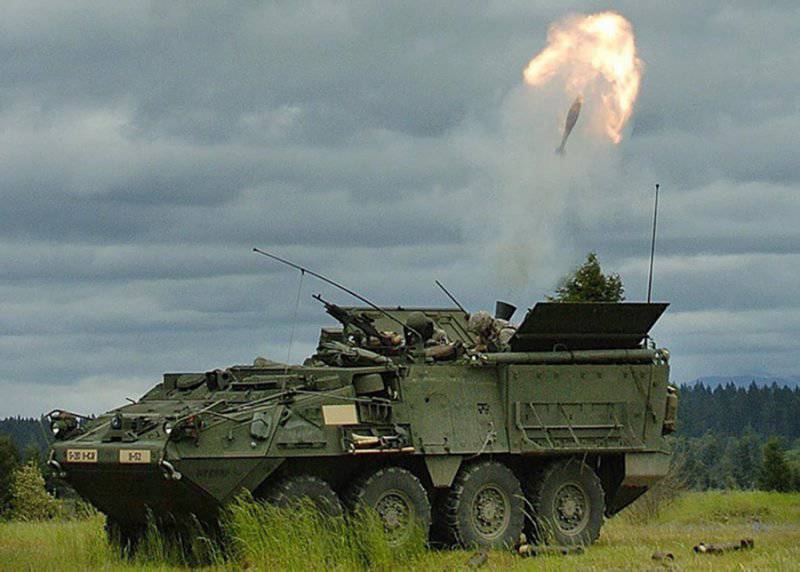

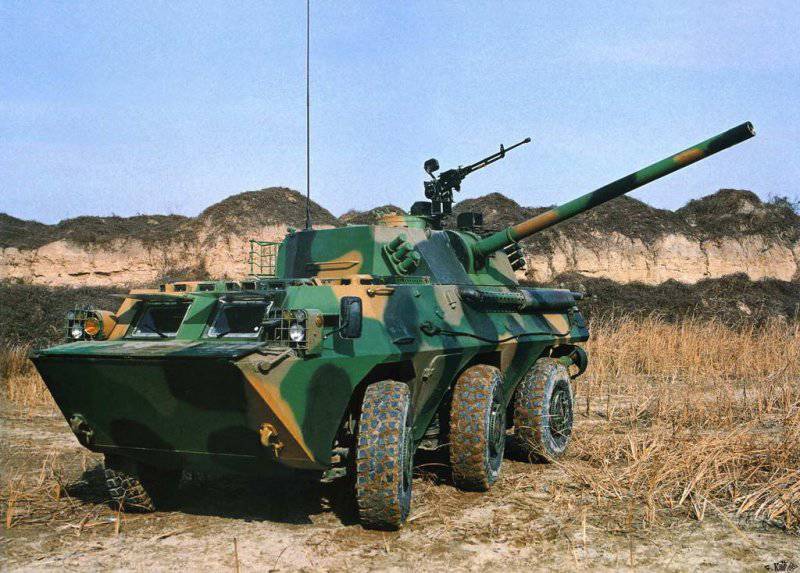
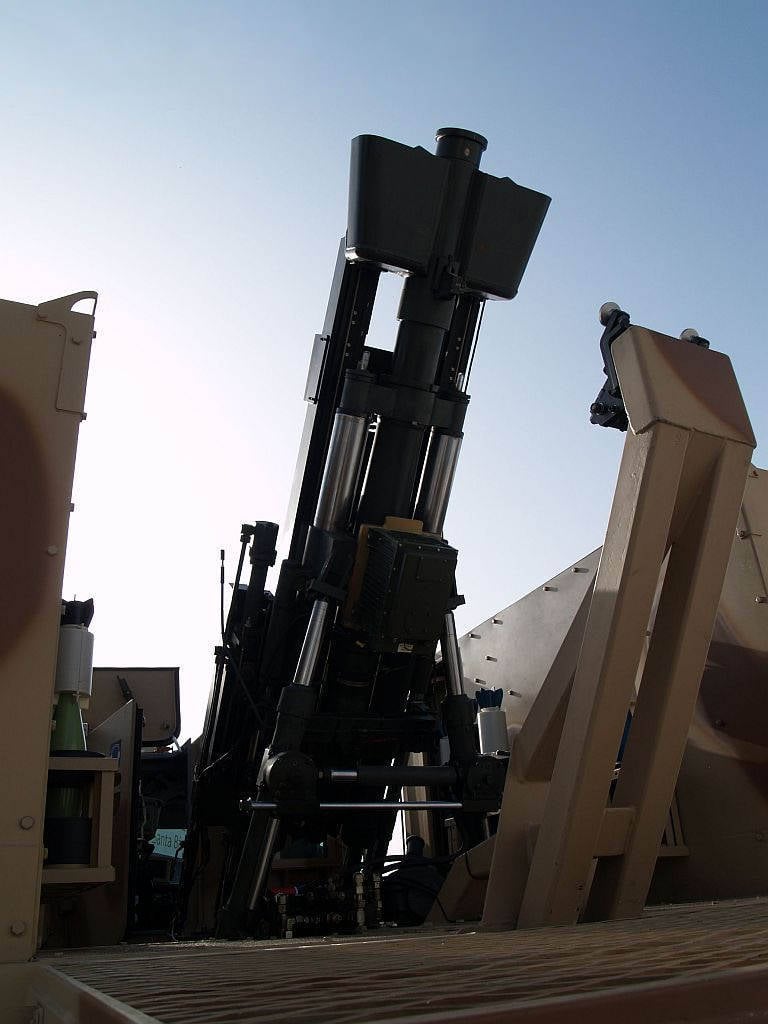

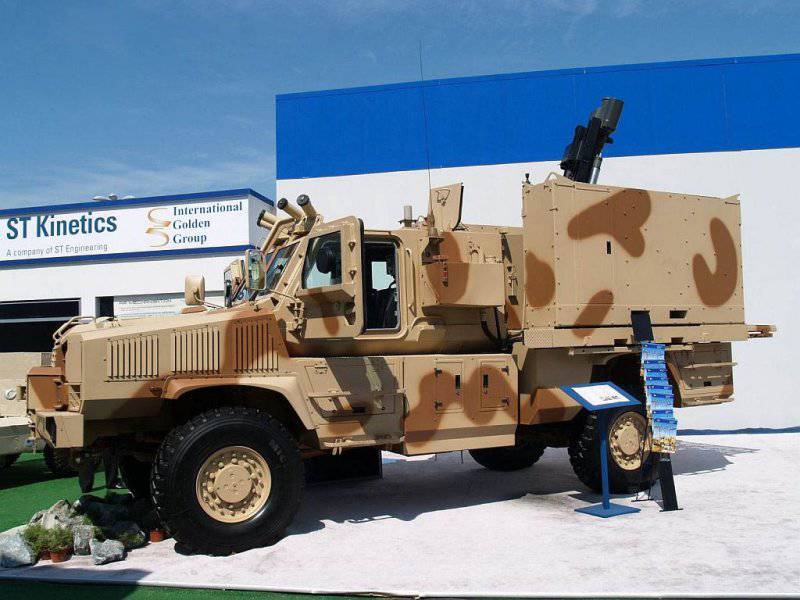
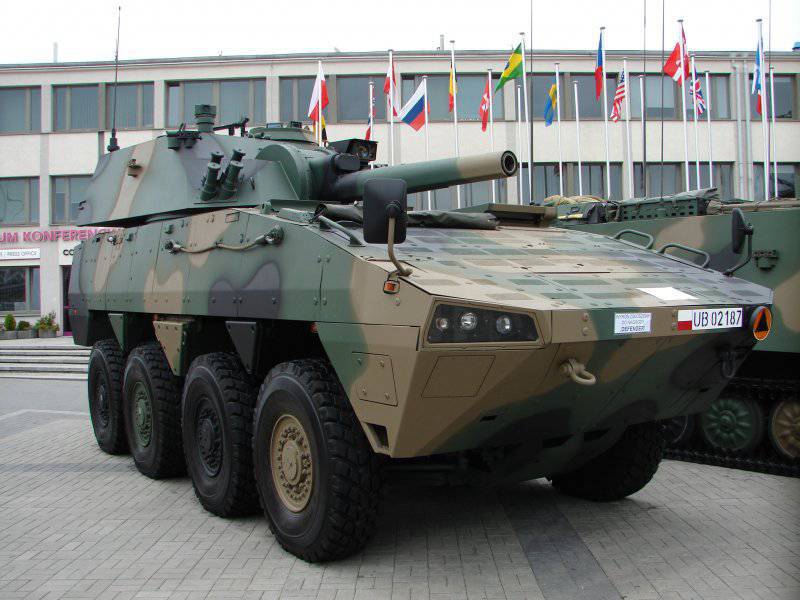
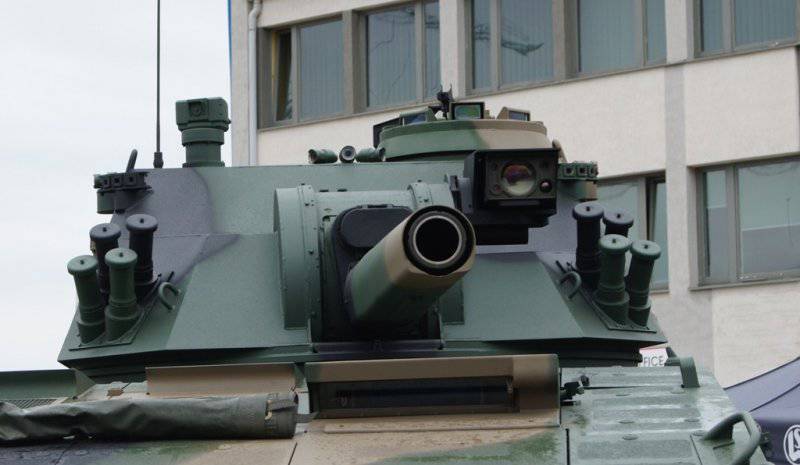
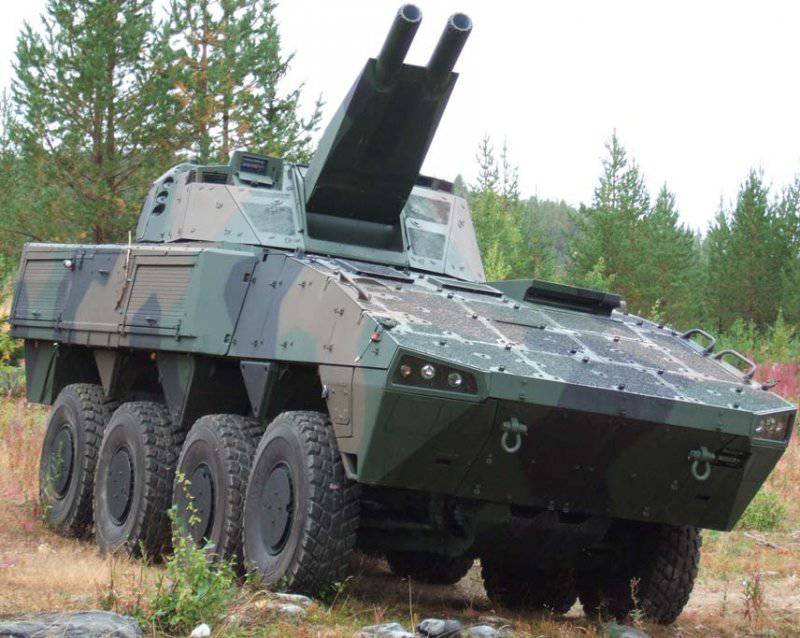
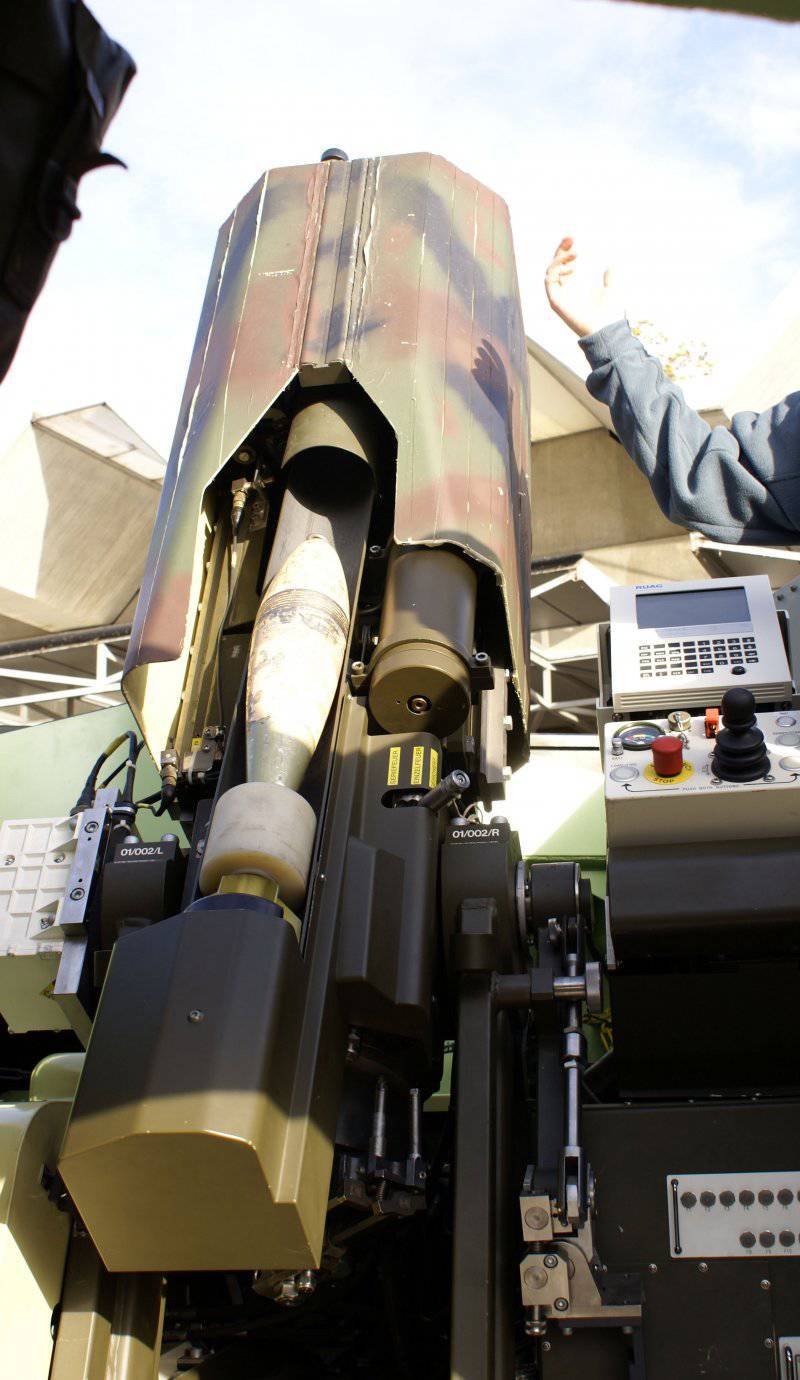
Information